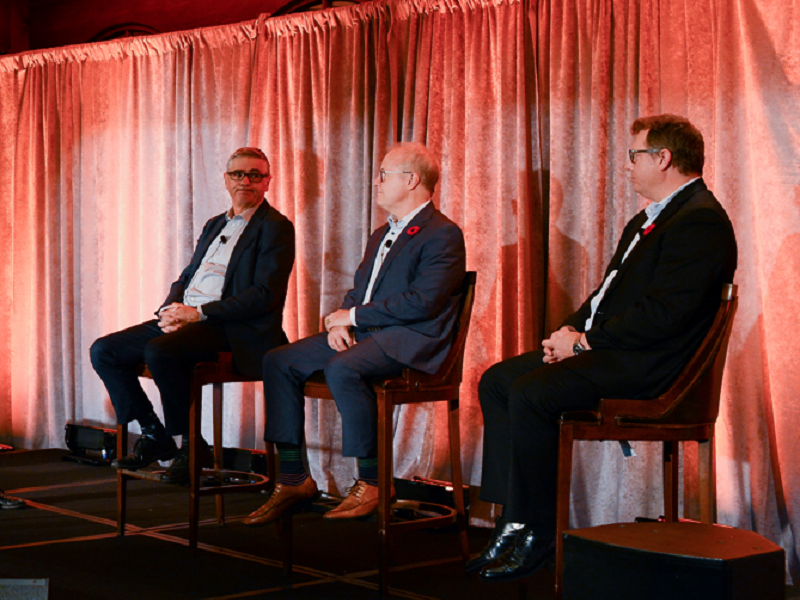
The coronavirus pandemic will leave an indelible mark on the way businesses operate, said Gary Timlick, chair of the investment committee at the Winnipeg Civic Employees’ Benefits Program, during a panel session on the long-term impact of the pandemic on commercial real estate at the Canadian Investment Review’s 2021 Investment Innovation Conference.
“There will be opportunities for staff to determine where they want to work — and some will want to work at home and some will want to work in the office. There’s going to be a bit of a challenge in meeting in the middle on that. I think most companies as a minimum would like to see staff in their office for a few days every week.”
Read: How will coronavirus affect real estate investing long term?
This conclusion was supported by an impromptu audience poll that asked whether delegates’ organizations were likely to adopt a permanent hybrid workplace model. All but four people raised their hands.
“Part of the reason we’re all actually considering this is that it works,” said Les Marton, managing partner at BFinance Canada. “Back in March 2020, we were all forced to work from home. Sure, there were hiccups. In general, though, things went smoothly.”
The movement toward hybrid workplace models will have a chilling effect on the commercial real estate sector, he said, noting he expects this dip in demand to be balanced out by an increase in the need for offices designed to accommodate businesses adopting a hybrid model.
“I think there’s going to be less need for office space. Having said that, I don’t think this will be across the board. The newer offices in the well thought out downtown — the class A-type building that has put a lot of effort into sustainability — have really put a lot of thought into making themselves friendly to a hybrid model as well.”
Read: Coronavirus pummels certain real estate assets, bolsters others: report
While this may make it easy for the owners of modern, top-tier buildings to secure tenants, Marton noted the average age of second- and third-tier offices, at 60 in the U.S., would make adapting more difficult. “What will really drive change is the labour shortage. If you want to convince people to come into the office, you’d better make sure it’s a nice one. We’re going to see office spaces offering more amenities and larger spaces. Those [class B and C] spaces that can’t be easily improved or turned into condominiums will have a problem. Most will, probably, be knocked down.”
Tom Keenleyside, associate director of investments at Western University, agreed that labour shortages are likely to help push up demand for attractive, top-tier offices to some extent. However, he still expects overall demand for premium space to fall.
“My estimate is that there will be [a] 20 per cent dip in demand for class-A office space over the next five years. The vacancy rates aren’t there yet, but that is because the leases on many long-term tenants haven’t come up for negotiation yet.”
Read: Real estate investments balloon as future of retail, office sectors remain up in the air
From an investment perspective, the panellists said they don’t believe pension plan sponsors should be moving away from making investments in premium office spaces. They also don’t expect interest in the broader real assets category to wane because of an increase in hybrid workplaces.
“The largest plans have allocations between 20 and 25 per cent and that’s typical for the top plans,” said Marton. “This has trickled down to the smaller and medium-sized plans. That’s not going away.”
Timlick suggested investors look more broadly at investments in real assets. He also cautioned plan sponsors against having a domestic bias in allocations toward the asset class. “Plans should be looking for a great deal of diversity within [real asset] holdings. Perhaps that could be based more geographically. There’s much more opportunity in the U.S. than in Canada.”
Read more coverage of the 2021 Investment Innovation Conference.
